A block A with mass 100kg is resting on another block B of mass 200kg. As shown in figure a horizontal rope tied to a wall hold it. The coefficient of friction between A and B is 0.2 while coefficient of friction between B and the ground is 0.3 . the minimum required force F to start moving B will be.
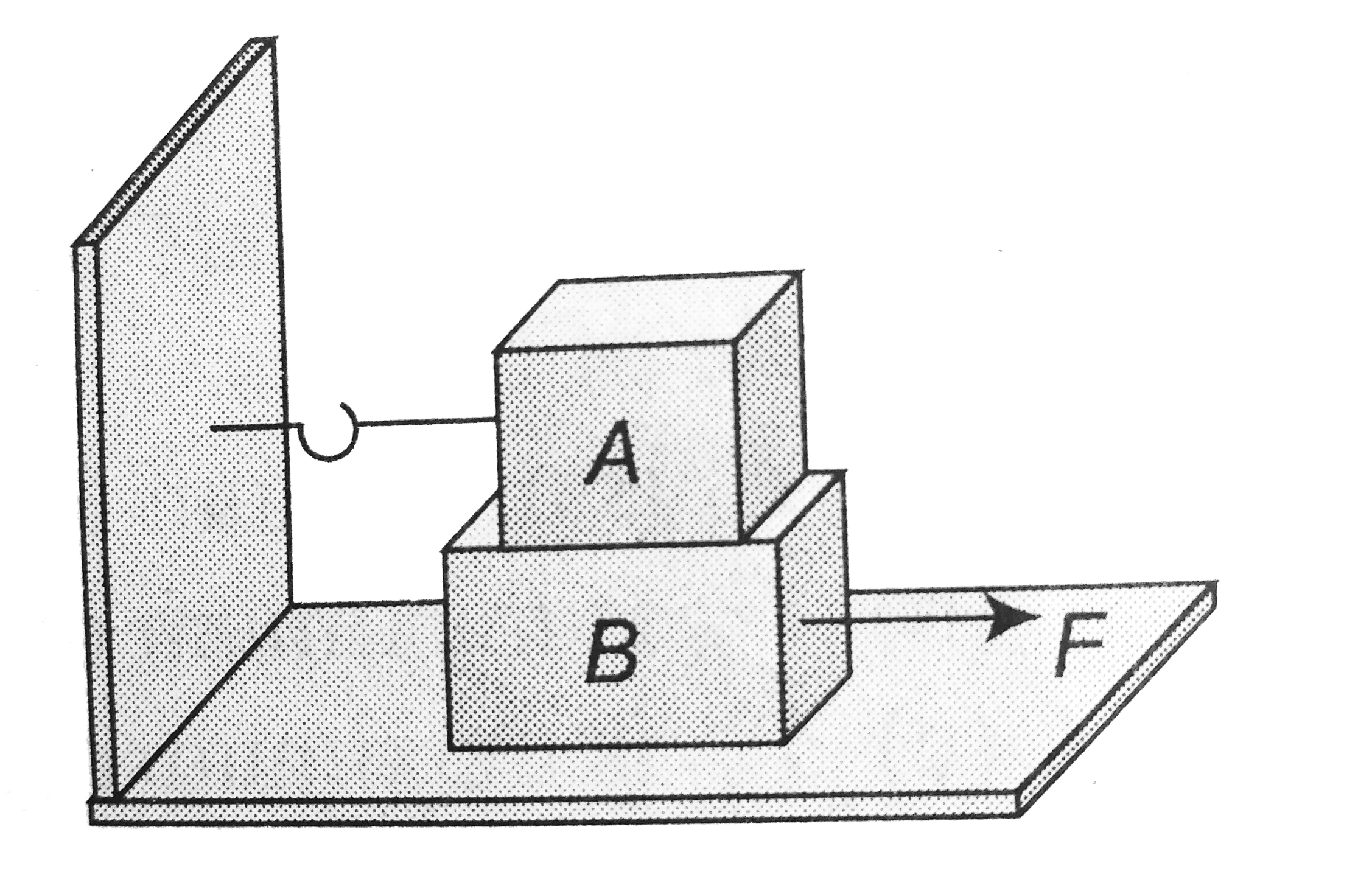
900N
100N
1100N
1200N
The correct Answer is:C
F=fAB+fBG
=μABmag+μBG(mA+mB)g
=0.2×100×10+0.3(300)×10
=200+900=1100N . 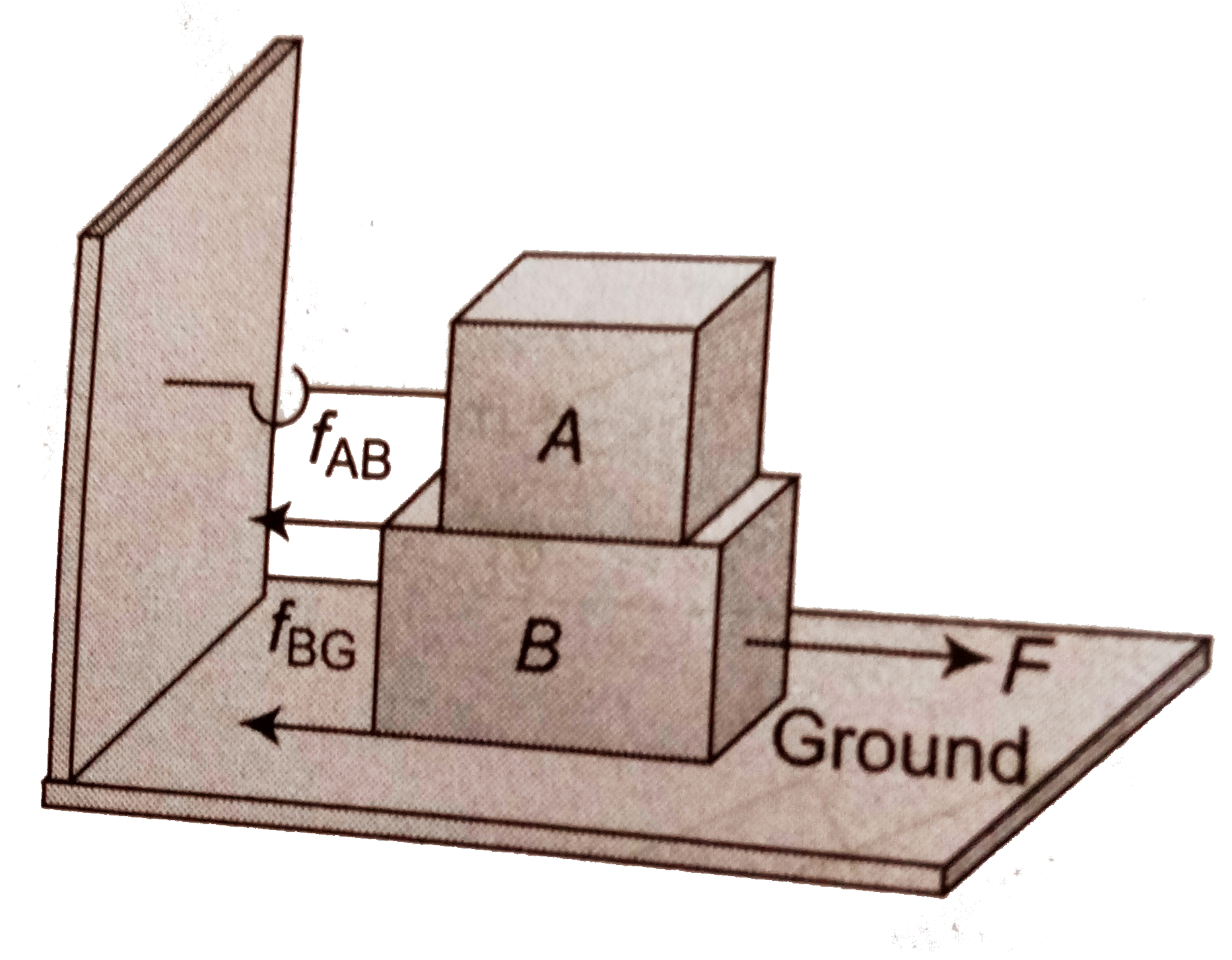
Topper's Solved these Questions
- NEWTONS LAWS OF MOTIONBOOK - A2ZCHAPTER - NEWTONS LAWS OF MOTIONEXERCISE - Dynamics Of Circular Motion
31 Videos
- NEWTONS LAWS OF MOTIONBOOK - A2ZCHAPTER - NEWTONS LAWS OF MOTIONEXERCISE - Problems Based On Mixed Concepts
51 Videos
- NEWTONS LAWS OF MOTIONBOOK - A2ZCHAPTER - NEWTONS LAWS OF MOTIONEXERCISE - Applications Of Newton'S Laws Of Motion
33 Videos
- MOTION IN TWO DIMENSIONBOOK - A2ZCHAPTER - MOTION IN TWO DIMENSIONEXERCISE - Chapter Test
29 Videos
- OSCILLATION AND SIMPLE HARMONIC MOTIONBOOK - A2ZCHAPTER - OSCILLATION AND SIMPLE HARMONIC MOTIONEXERCISE - Chapter Test
29 Videos
Similar Questions
A block A with mass 100kg is resting on another block B of mass 200kg. As shown in figure a horizontal rope tied to a wall hold it. The coefficient of friction between A and B is 0.2 while coefficient of friction between B and the ground is 0.3 . the minimum required force F to start moving B will be.

View SolutionA block A of mass 2 kg rests on another block B of mass 8 kg which rests on a horizontal floor . The coefficient of friction between A and B is 0.2 while that between B and floor is 0.5 . When horizontal force F = 25 N is applied on the block B , the force of friction between A and B is (in N) .
View Solution
Knowledge Check
A block A of mass 100 kg rests on another block B of mass 200 kg and is tied to a wall as shown in the figure. The coefficient of friction between A and B is 0.2 and that between B and ground is 0.3. The minimum force required to move the block B is (g=10ms−2)
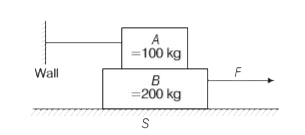 A900 NB200 NC1100 ND700 N
A900 NB200 NC1100 ND700 NA block A of mass 100 kg rests on another block B of mass 200 kg and is tied to a wall as shown in the figure. The coefficient of friction between A and B 0.3. The minimum force F required to move the block B is (g=10−2
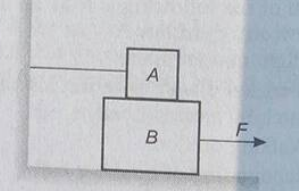 A900 NB200 NC1100 ND700 N
A900 NB200 NC1100 ND700 NA block A of mass 100 kg rests on another block B of mass 200 kg and is tied to a wall as shown in the figure. The coefficient of friction between A and B 0.3. The minimum force F required to move the block B is (g=10−2
 A900 NB200 NC1100 ND700 N
A900 NB200 NC1100 ND700 N
A block A of mass 200kg rest on a block B of mass 300kg. A is tied with a horizontal string to a wall. Coefficient of friction between A and Bis0.25 and that between B and floor is 0.2. The horizontal force F needed to move the block B is

View SolutionA block A of mass 2kg rests on another block B of mass 8kg which rests on a horizontal floor. The coefficient of friction between A and B is 0.2 while that between B and floor is 0.5.When a horizontal floor F of 25N is applied on the block B the force of friction between A and B is
View SolutionA block A of mass 2 kg rests on another block B of mass 8 kg which rests on a horizontal floor. The coefficient of friction between A and B is 0.2 while that between B and floor is 0.5. when a horizontal force of 25 N is applied on the block B. the force of friction between A and B is
View SolutionTwo blocks A and B having masses 100 kg and 200 kg are placed as shown in the figure. The block A is connected to a wall with a light inextensible string. The coefficient of friction between the blocks is 0.3 and that between the block B and the floor is 0.03. Then the minimum force required to move the block B will be (take g=10m/s2)
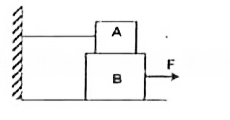
View SolutionBlock A and B of masses 5 kg and 10 kg are placed as shown in figure. If block A is pulled with 50 N. Find out acceleration of the A and B. If coefficient of friction between A and B is 0.5 and between B and ground is 0.4.

View Solution
